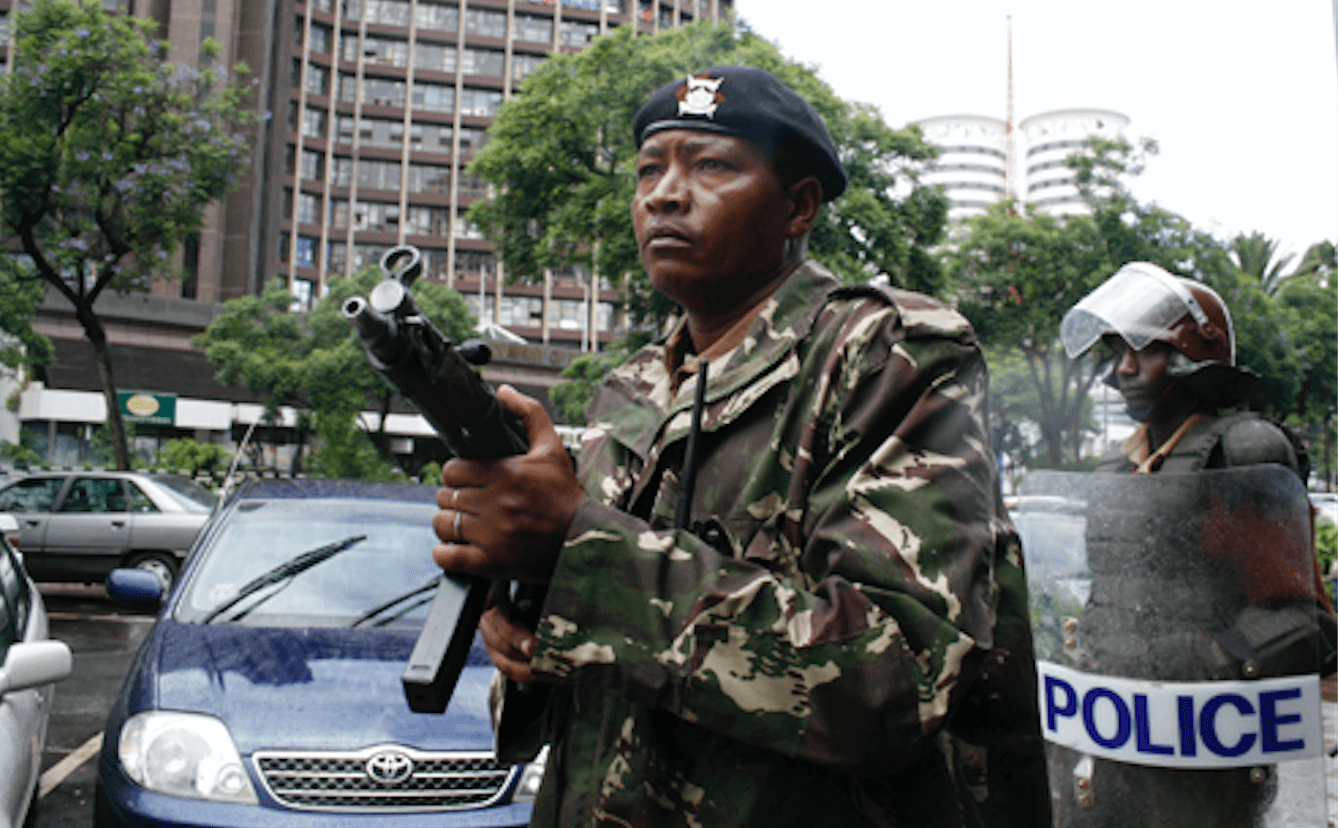Last week Kenyan election officials announced that President Uhuru Kenyatta won re-election in a landslide vote. But rather than marking an ending to a particularly tumultuous chapter in Kenya’s electoral history, the announcement is likely to spur a further crisis of credibility for Kenya’s young democracy.
Kenya does not as the smoothest history when it comes to multiparty democracy. Since multiparty elections were first introduced in 1992, elections have been marred by violence and protests more often than not. This came to a pinnacle with the post-election violence in 2007, but extensive legal reforms since then saw a peaceful election in 2013 and a hope that Kenyan democracy was finally consolidating and coming into its own.
Those hopes are perhaps premature. In August, Kenya held a highly charged election that pitted Kenyatta’s Jubilee party against the perennial opposition leader Raila Odinga and his National Supreme Alliance (NASA) coalition. In the run up to the election, Kenya experienced the same targeted fake news campaigns previously seen in the US and UK, and the shocking murder of a senior election official just a week before the poll heightened concerns that the result would not be accepted by the losing side.
The election in August saw Kenyatta re-elected with a healthy margin, while at least 37 people were killed, mainly in opposition strongholds. Following the announcement of the election results, Odinga and NASA rejected the results. What followed is unprecedented in African politics.
Challenging the results in court, Odinga argued that widespread discrepancies made the results un-credible. Surprisingly, the court ultimately agreed and annulled the results on September 1. In a lengthy court proceeding a few weeks later, the justices explained in detail how they reached the decision. Outside the court, supporters of both sides fought as police fired teargas to break up the crowds. With a new election scheduled just a month later, tensions throughout the country started to reach a fever pitch.
Two weeks before the scheduled re-run, Odinga dropped out of the race, stating that sufficient changes has not been made to address the problems that caused the first election to be nullified. Although a few small players still were in the election, by dropping out Odinga assured that Kenyatta would win. But by boycotting the election, it also assured that end results would be rejected by his own supporters.
Sure enough, turnout for the re-run was far lower, with much of the country’s precincts having below 50 percent turnout. Not all the precincts were even able to vote as widespread violence and protests delayed voting in four counties. Nationwide, only 38 percent of the electorate voted, the lowest turnout in the history of Kenya’s multiparty democracy. Running battles with police in opposition strongholds left several dead, though the exact number is disputed. With this background, Kenyatta has been declared the winner with 98 percent of the vote and the country remains on edge as people wait to see what will happen next.
In many ways, the annulment of the August election is a victory for democratic accountability. In previous cases of post-election violence, the weakness of Kenyan institutions was faulted as a major cause.
But as Ken Opalo, a native Kenyan and assistant professor for African studies at Georgetown University, noted, “While the Supreme Court was under pressure from both NASA and Jubilee, it was also faced with the fact that its decision would have long-lasting ramifications for Kenyan jurisprudence. The fact that they were able to issue a brave ruling confirms the independence of the Kenyan judiciary and the continued institutionalization of rule of law in the Jamuhuri [republic].”
But a victory for some Kenyan institutions may not be a victory for Kenya as a whole. The conduct of the Independent Electoral and Boundaries Commission (IEBC) and Kenyatta’s Jubilee party since the court decision demonstrates that Kenyan democracy may not be strong enough to withstand the pressures that can come with multiparty democracy.
Even the judiciary appears to be cracking under the pressure. Both Kenyan and international observers recommended the re-run election be postponed due to lack of preparedness. With the heightened tensions, one senior member of the IEBC fled the country out of fear for personal safety.
The concerns led to a petition filed with the court to postpone the election until IEBC could be better prepared and tensions had subsided. But threats were not limited to the IEBC. Several of the justices received death threats and after a bodyguard of one of the Supreme Court justices was shot by an unidentified gunman, only two of the seven justices showed up to vote on the petition to postpone. Without a quorum, there was no ruling and the re-run election went on as scheduled, yet another blow to the election’s ultimate credibility.
The developments of the past few months will stay with Kenya for years to come.
It remains unclear what the final legacy will be, but it is apparent that Kenya’s political elite have yet to learn certain lessons from the past. Again, as Opalo wrote in September following the election annulment, “Peaceful voting and counting of votes should not be the only tests of an election’s credibility…The goal should be to tie the hands of the IEBC to ensure that the voting, the counting, and the transmission of results stick to statutory procedures. Kenyans will respect the outcome if the process is (and appears to be) transparent.”
That credibility and transparency is sorely lacking in 2017. How Kenya responds to these challenges can either help its democracy grow in the next elections in 2022 or further hold it back. With so much on the line, the institutional gains since 2007 should be protected but more is also needed. Democracy is a complicated and fragile system; even with its missteps and need for improvement, Kenya has made progress.
